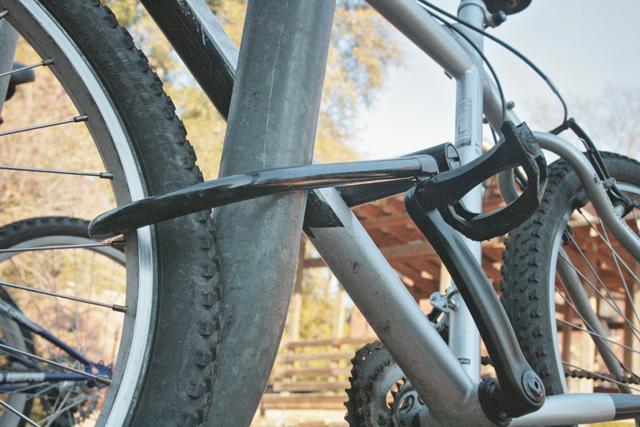Keith Council thought his bike was safely locked outside of Sullivan Hall. However, when he went to unlock it, he found that not only was his front tire missing, his lock had been removed and replaced with a lock that wasn’t his.
“Campus Police said there was really no way to figure out who did it,” Council, a freshman in engineering, said. “I had to buy another tire…I was pretty mad.”
Council was one of 91 victims of bike theft in 2010. This number has dropped since 2009, which had 111 bike thefts. Despite the decrease, Campus Police are fed up with these statistics. They have recently started “Bait Bikes,” a program in which GPS tracking devices are placed in several bikes planted around campus by police.
Campus Police Sergeant Ian Kendrick is in charge of the program and says they have already made one arrest.
“It is very encouraging to see that the program works,” Kendrick said.
About a year-and-a-half ago, Campus Police began using surveillance to try and catch the bike thieves. Kendrick said this was too man-power intensive, so they started using the GPS programs.
“We had to do something besides strictly surveillance,” Kendrick said. “[Bait Bikes] offers a lot of flexibility.”
Kendrick could not disclose how many bikes are being used for the program, but he said there are several, and their locations depend on where bikes have been stolen the most in the past.
The baited bikes are normal bikes; ones that are seen every day and can be bought anywhere. They have no distinguishing features, and are all properly locked.
“The point of it is to blend in,” Kendrick said.
According to the Campus Police website, most bike larcenies occur on bikes that were locked with chains or cable locks. Locking just the frame of a bike to a post is not the correct way to secure a bike.
The proper way to secure a bike is to use a U-lock and to lock the bike frame and the front wheel to a bike rack.
Harrison Baggs, a freshman in physics, said locking the bike properly is a good way to deter potential bike thieves.
“The only people that I’ve heard of having their bikes stolen are those that either don’t lock it or get crappy locks,” Baggs said. “I’m more afraid of the seat and wheels getting stolen.”
Kendrick wants students to know proper ways of keeping their bikes safe, which involves more than just locking the bike. Documenting information about the bike, including the make and model, the value, the serial number and any other details about the bike will help police find a missing bike.
Students also have the option of taking their bikes to Campus Police to get the bike engraved with a special identification number to help police find the bike if it gets stolen.
Kendrick said the “Bait Bikes” program will continue as long as it proves effective.
“It is a reliable technology that has been around for years,” Kendrick said.
Similar programs have been used all over the United States as well as some parts of Canada.
Council said he is not afraid of having his bike tire stolen again.
“There are so many bikes out here,” Council said. “I don’t see how it can happen twice; I guess it is a possibility though.”








